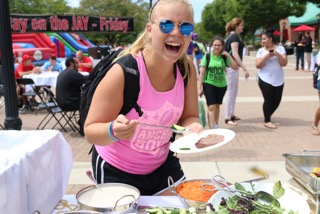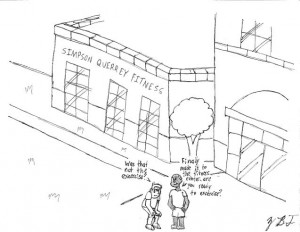By Areena Arora, Managing Editor
According to an email sent out on Tuesday, Sept. 13, the Federal Bureau of Investigation (FBI) contacted the university to meet with enrolled students who are Pakistani nationals.
The email sent by Director of Media Relations, Cole Hatcher, was signed by Bob Wood, director of Public Safety. The meeting was scheduled to happen on Thursday, Sept. 15, but was later canceled when the notice caused real anxiety among students, according to Dwayne Todd, V.P. for student engagement and success.
According to the initial email to the students, “The purpose of the meeting [was] to discuss specific organizations based in Pakistan.”
Attendance, according to the email, was voluntary, and students were encouraged to bring friends, regardless of their nationality.
Senior Khadija Salman said, “My initial confusion led to me being just angered by the justice system and federal agencies of our country. I felt attacked and targeted as they were only asking Pakistani nationals to attend the session. Even if it is voluntary, it comes off as racial profiling and as a college student with no immediate family around it concerns me. It is disruptive to our lives and makes us feel like we are being held accountable for the actions of a few just because we belong to the same state.”
She added, “Internationals students are required to go through a background check when they apply for a visa. For the FBI to come on campus, to question us about certain organizations in Pakistan in attempts of gathering information and making a public ordeal about this is just ridiculous. Even if it is voluntary, I take it as a personal attack and I find this act of theirs extremely offensive.”
Salman is a dual U.S. and Pakistani citizen who heard about the meeting from other Pakistani students. She did not receive the email, she said.

Sophomore Zafir Hayat, also from Pakistan had a different reaction. He said, “I feel indifferent to the fact that they did not end up coming … I do believe, however, that the reaction to the email was blown a tad bit out of proportion. After all it was a voluntary meeting and if somebody did not want to attend had that option.”
Todd said he does not know the exact date when the FBI contacted the school or why exactly so.
He said, “We don’t know for sure why the FBI wanted to speak with Pakistani students other than their stated intent to learn more about some organizations within Pakistan. There were multiple colleges who were contacted at the same time with the same request. I am told that the FBI frequently makes such requests to college administrators about international students from a variety of countries around the world.”
Salman said, “A part of me would love to see the entire Pakistani community on campus boycott it. But on the other hand I am very much curious to hear about what they have to say and exactly what they were planning to ask us about. It’s absolutely appalling to see just how far federal agencies and those with authority will go to get what they want without thinking about the implications of their actions. The Pakistani community on OWU’s campus has peacefully coexisted with other students and has even integrated within our communities.
Todd said, “I regret that the FBI’s request made many of our students question their sense of belonging as international students. We deeply value the presence of our Pakistani students, and all international students, on campus and know that they add so much to the rich tapestry that makes up our campus community. We are consulting with legal counsel to determine our legal requirement to comply with such requests in the future.”
Hayat said, he would be willing to go to the session, if it happens, and see what the meeting was about and what the FBI needed help with.


























